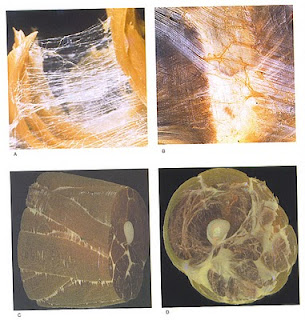Relationships
 Solitude can be a powerful ally in the inward journey; though just as readily, solitude can be the province of self-deception. Perhaps you've experienced moments of great clarity, only to have your repose shattered by the intrusions of your wife/husband/child/pet. How many of us daydream about the potential for enlightenment, if only we could only escape from the distractions all around us?
Solitude can be a powerful ally in the inward journey; though just as readily, solitude can be the province of self-deception. Perhaps you've experienced moments of great clarity, only to have your repose shattered by the intrusions of your wife/husband/child/pet. How many of us daydream about the potential for enlightenment, if only we could only escape from the distractions all around us?Relationship becomes the true test of our inward journey. If we are as kind, open-hearted and generous when surrounded by the most difficult people, then our practice has really borne fruit.
Within our own bodies, relationship is every bit as important. I encounter many yoga students who have studied individual muscles at great length, yet have neglected to consider how the muscles are to glide across each other in healthy movement. The body is a collection of layers. Atop the bones are the deepest muscles, and atop those muscles are more layers of muscles. The capacity of muscles to glide fluidly one across the other predicts optimal health far more reliably than the condition of any specific muscle. In other words, the relationships among the muscles are more important than solitary muscle-enlightenment.
The individual muscle fibers are wrapped in a sheathing called fascia. Fascia is a form of connective tissue made of the same stuff as ligaments and tendons. It's very tough, and helps define the shape of each muscle, and in turn, the body. The thin sheathing of fascia not only contains each muscle, it also acts as a sort of lubricant in that healthy fascia glides smoothly against adjacent sheaths of fascia. In optimal health, the fascia is very slippery, and adjacent tissues can glide freely without dragging or getting stuck on its neighbors.
For many of us, however, our tissues don't glide very smoothly. Regardless of the health of any individual muscle, if it cannot glide smoothly across adjacent tissues, this drag on the system will cause stresses to be transmitted to the joints. In teaching therapeutic yoga, I often find these sorts of adhesions underlying the common pains of the neck, shoulders, back and knees.
There are many causes of fascial adhesions. One of the most common is a previous injury. When a muscle is strained or torn, the body logically adheres the injured tissues to adjacent muscles. This forms a sort of splint that allows the injured tissues to heal. Once the healing is complete, however, the adhesions usually remain frozen in the body-matrix. I've worked with many students whose current pains are related to adhesions resulting from injuries or surgeries two or more decades previous! One of the benefits of a regular, intelligent practice of yoga is to restore the fluid relationships among neighboring tissues.
Another common cause of fascial adhesions is stress. When under prolonged stress, the body naturally tries to create its own armor. When adjacent tissues are glued together, the body becomes nearly impenetrable. While this may buffer the short-term stress, the body becomes progressively stiffer and less resilient. When a sudden movement is required, such as catching one's balance or reacting to an unforeseen situation, the brittle tissues are more likely to over-stretch or tear. A practice of yoga that includes a committed focus on breathing can be a powerful antidote to stress, which yields long-term benefits for body and mind.
Along with prior injury and stress, another common cause of fascial adhesions is poor hydration and/or diet. Dehydration literally dries out the body's tissues, and the fascial layers inevitably glue together into a desiccated mass. Drinking at minimum a half-gallon of water each day is a good starting point, and many people may thrive with much more than that. A healthy diet that includes a balance of fruits, vegetables, whole grains, healthy fats and protein also contributes to healthy connective tissue. Over-processed, salty or sugary foods have a dehydrating effect on the connective tissue, which contributes to sticky muscle relationships.
Our bodies are engineered for tremendous vitality and longevity. By avoiding interactions that carry the potential of causing us pain or injury, we often barricade ourselves from the real potential for growth. When we fully commit to the risks of a well-lived life we may get hurt. Rather than recoiling from the possibility of sticky relationships, a dedication to the practices of meditation and yogasana are profound lubricants for both body and mind, and allow us to live in the possibility of achieving optimal health. Through the harmony of body and mind, the doors to spirit are thrown open.
Best wishes during this holiday season!
~ Scott
www.alignmentyoga.com



Comments